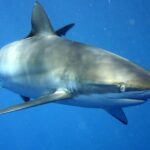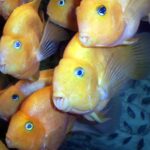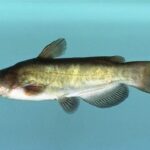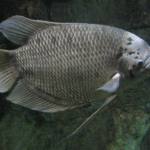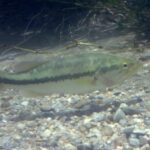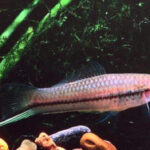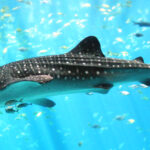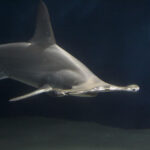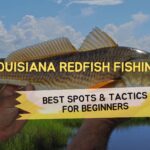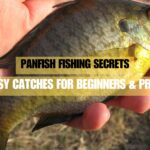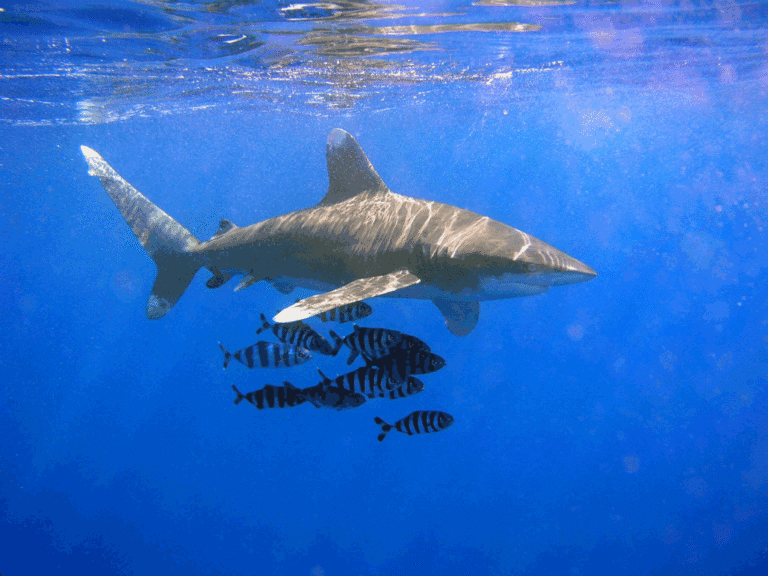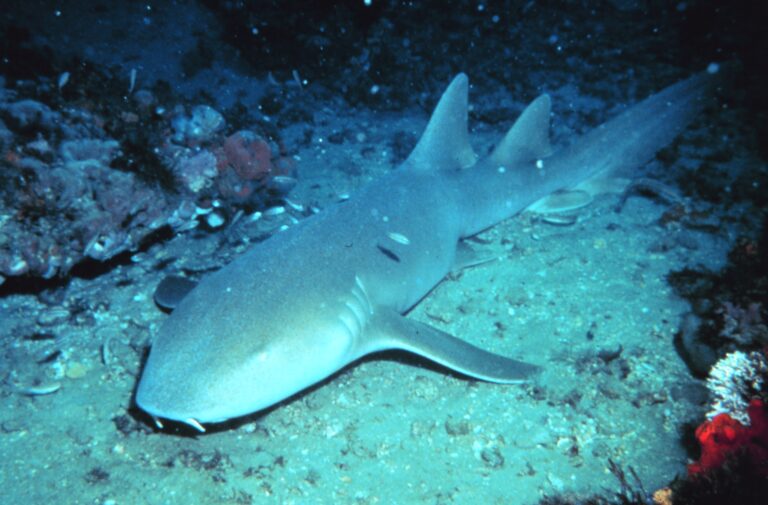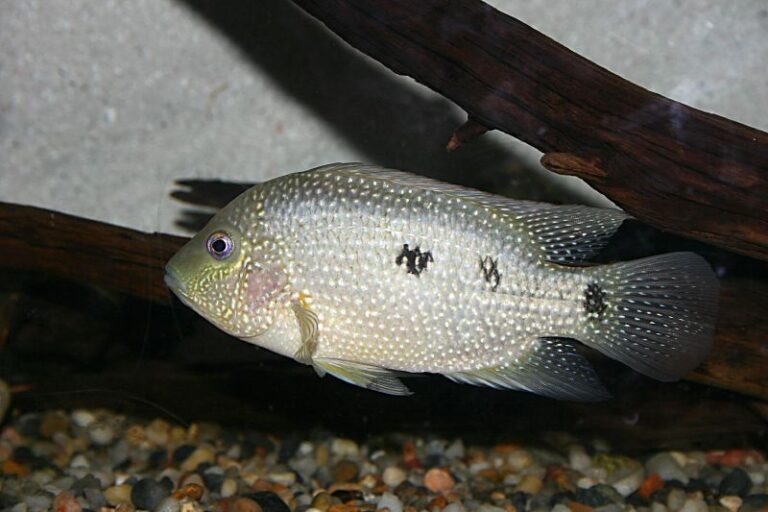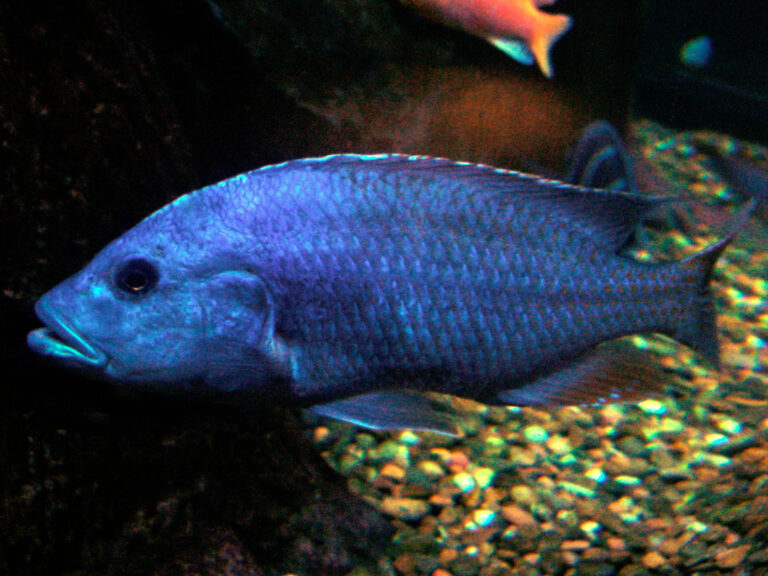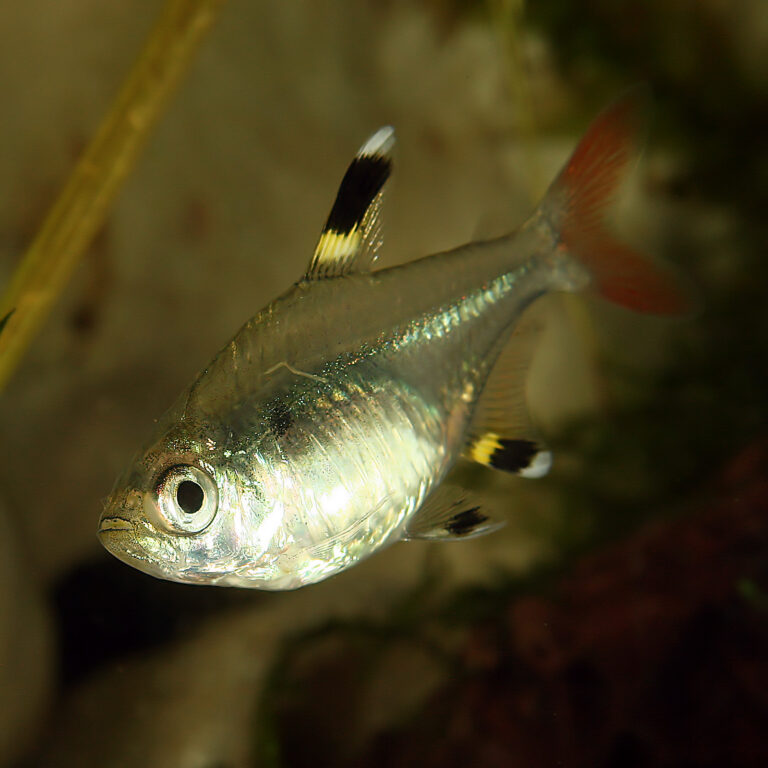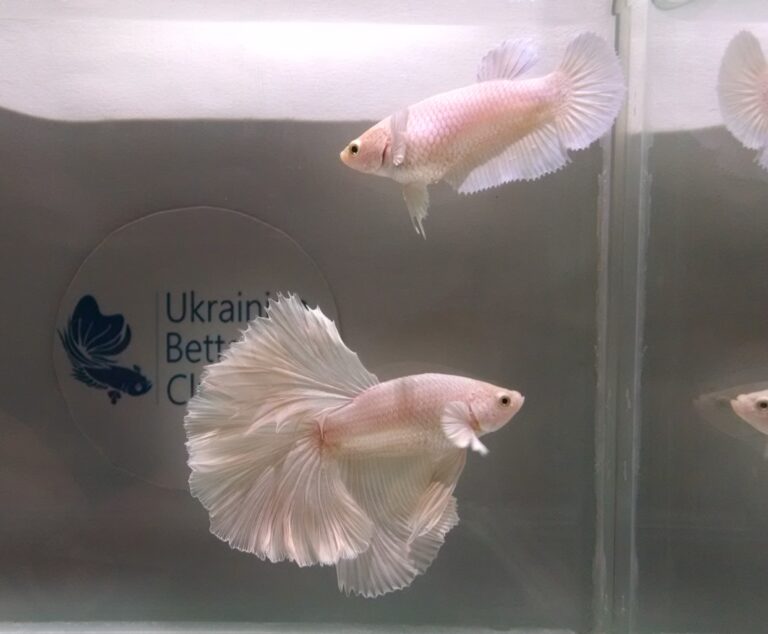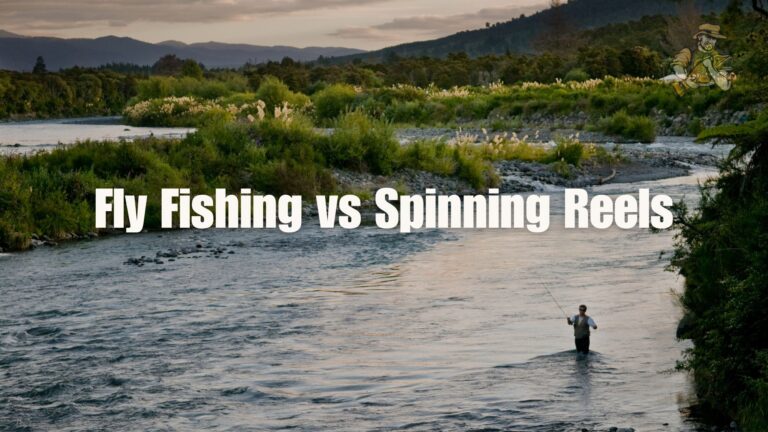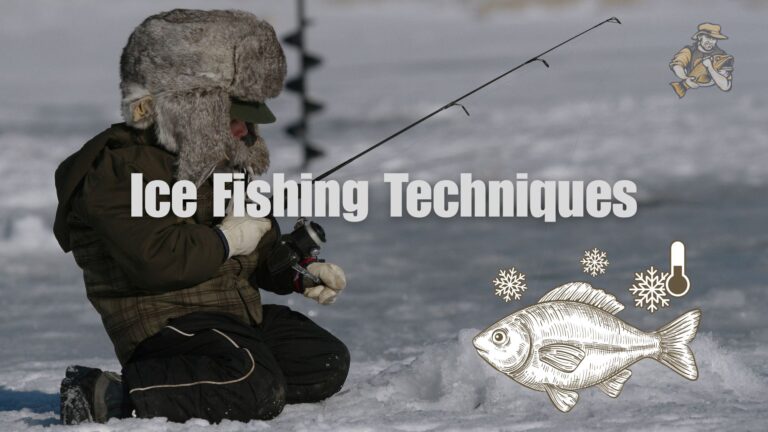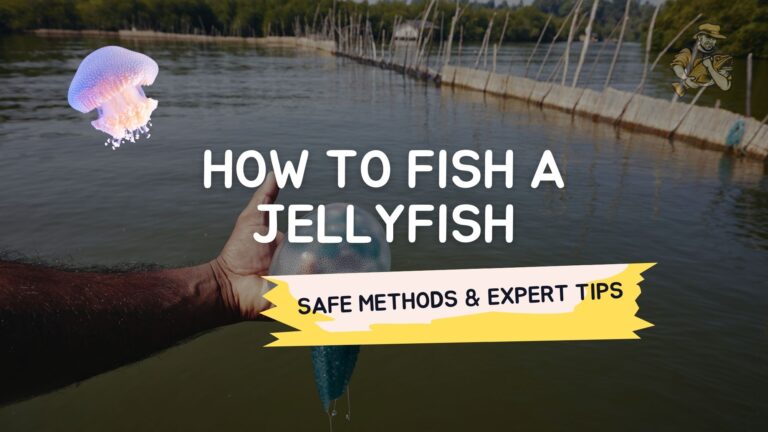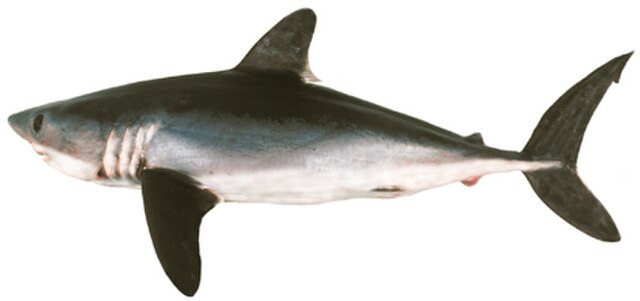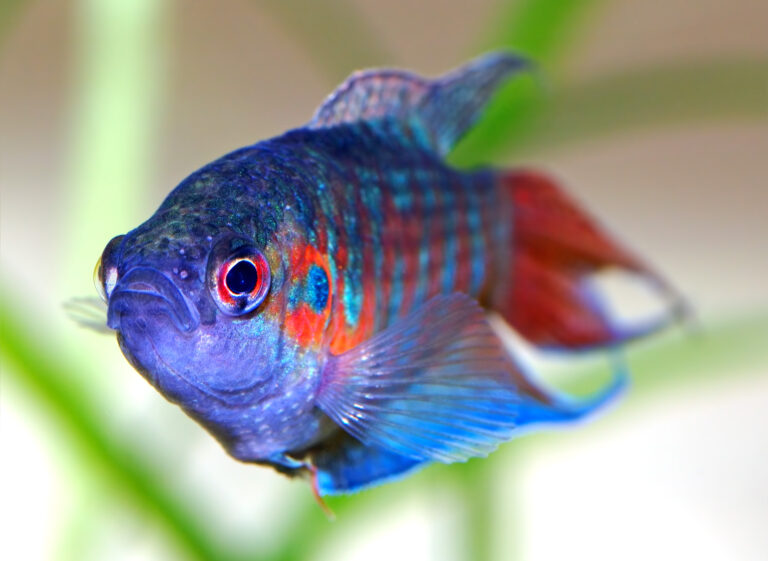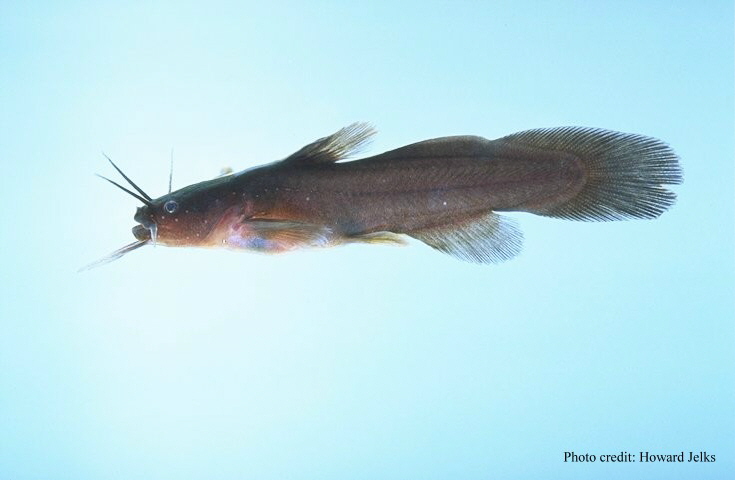Fantail Goldfish
By Ryan Maron | Last Modified: July 4, 2025
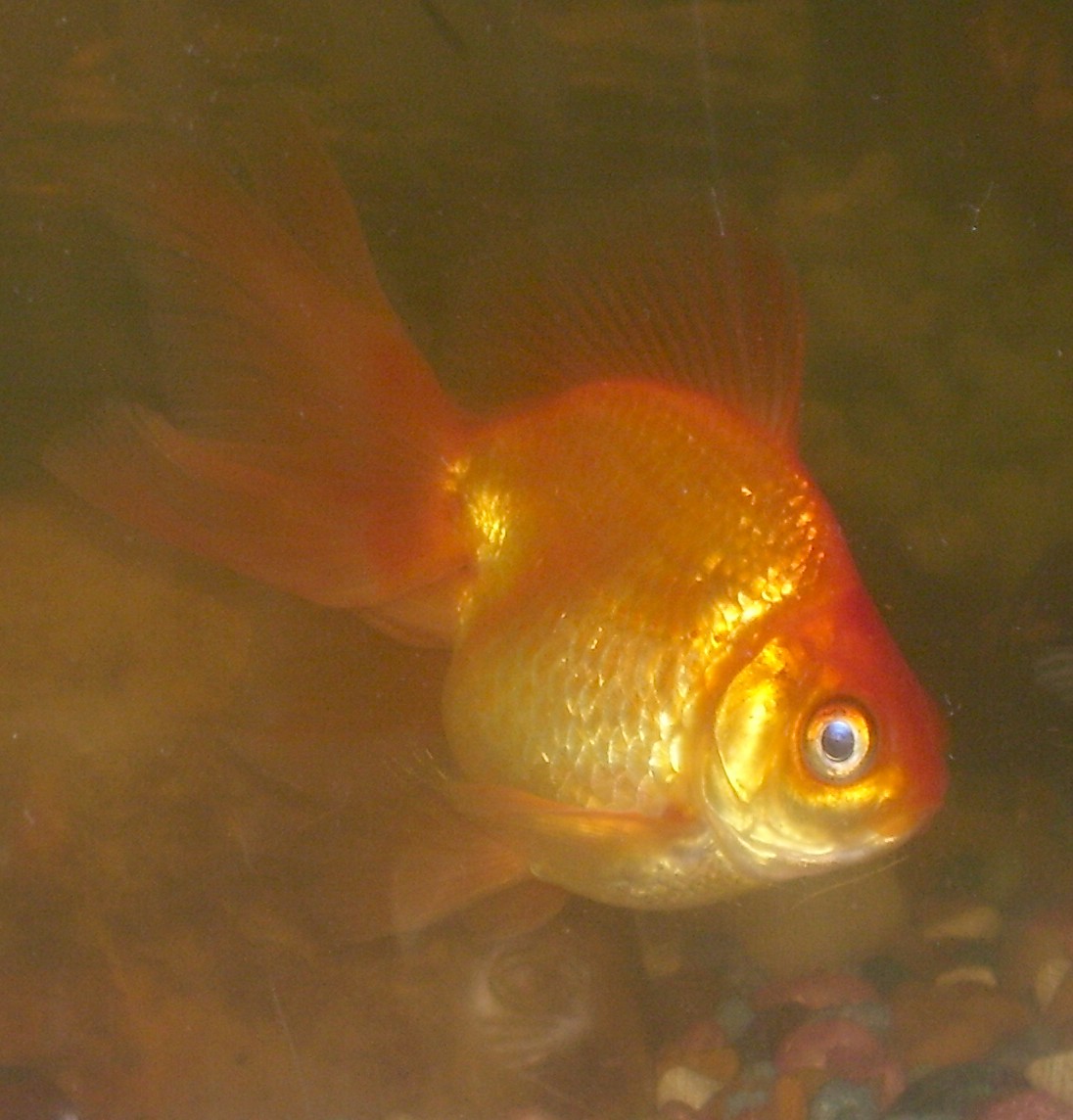
The Fantail Goldfish represents one of the most recognizable and beloved fancy goldfish varieties in the aquarium trade worldwide. Known scientifically as *Carassius auratus*, this ornamental fish has captured the hearts of aquarists for centuries with its distinctive double tail and graceful swimming patterns. The Fantail Goldfish plays a significant cultural and economic role in the global ornamental fish industry, serving as both an entry-level species for beginning aquarists and a prized specimen for experienced collectors.
This hardy freshwater fish demonstrates remarkable adaptability to various aquatic environments, making it an ideal choice for both indoor aquariums and outdoor pond systems. The Fantail Goldfish serves as an important ambassador species, introducing countless individuals to the responsibilities and rewards of aquatic husbandry while contributing to local aquatic ecosystems when properly managed.
| Feature | Details |
|---|---|
| Common Name | Fantail Goldfish |
| Scientific Name | Carassius auratus |
| Family | Cyprinidae |
| Typical Size | 15-20 cm (6-8 inches), 85-170 grams |
| Habitat | Freshwater aquariums and ponds |
| Diet | Omnivorous |
| Distribution | Worldwide in captivity |
| Conservation Status | Not Evaluated (Domestic Variety) |
Taxonomy & Classification
The Fantail Goldfish belongs to the family Cyprinidae, which encompasses the largest family of freshwater fish species globally. Within this extensive family, the species *Carassius auratus* represents the domesticated form of the Prussian carp, selectively bred over more than a millennium to produce the ornamental varieties we recognize today.
The taxonomic classification places the Fantail Goldfish within the order Cypriniformes, class Actinopterygii, and phylum Chordata. This classification system reflects its evolutionary relationship to other carp-like fishes and its position as a ray-finned fish. The genus *Carassius* includes several closely related species, though *C. auratus* remains the most extensively modified through selective breeding programs.
Modern genetic analysis has revealed that all goldfish varieties, including the Fantail Goldfish, share common ancestry with wild populations found in East Asian river systems. The species designation *auratus*, meaning “golden,” reflects the characteristic coloration that distinguishes these fish from their wild counterparts. Selective breeding has produced numerous morphological variants while maintaining the fundamental genetic structure of the parent species.
Physical Description
The Fantail Goldfish exhibits distinctive morphological characteristics that set it apart from both wild-type goldfish and other fancy varieties. The most prominent feature is the divided caudal fin, which creates the characteristic double-tail appearance that gives this variety its common name. This bifurcated tail fin displays considerable individual variation in size, shape, and degree of separation between the upper and lower lobes.
Body conformation in Fantail Goldfish typically features a moderately compressed, oval-shaped profile with a slightly rounded dorsal surface. The head displays a broad, triangular shape when viewed from above, with large, prominent eyes positioned laterally. Eye size and shape can vary significantly among individual specimens, with some displaying telescope-like protrusion while others maintain more standard proportions.
Coloration patterns in Fantail Goldfish encompass a remarkable spectrum of possibilities. Traditional orange and gold colorations remain most common, but selective breeding has produced specimens displaying red, white, black, blue, chocolate, and calico patterns. Scale types include metallic, nacreous, and matte finishes, each contributing to the overall visual appeal of individual fish.
Adult Fantail Goldfish typically achieve lengths between 15-20 centimeters, though exceptional specimens may exceed these dimensions under optimal conditions. Body weight generally ranges from 85-170 grams, with well-conditioned individuals displaying robust, rounded body profiles that indicate proper nutrition and health status.
Habitat & Distribution
In captivity, Fantail Goldfish demonstrate remarkable adaptability to various aquatic environments, thriving in both indoor aquarium systems and outdoor pond installations. These fish prefer well-oxygenated water with moderate circulation, as their modified body shape and swimming efficiency require careful attention to water quality parameters.
Optimal water temperature ranges for Fantail Goldfish span 18-22 degrees Celsius, though they can tolerate broader temperature fluctuations when properly acclimated. pH requirements remain flexible between 6.5-8.0, reflecting their hardy nature and tolerance for various water chemistry conditions. Water hardness preferences range from soft to moderately hard, accommodating most municipal water supplies with minimal adjustment.
The global distribution of Fantail Goldfish extends across all inhabited continents through the international ornamental fish trade. Major breeding facilities operate throughout Asia, particularly in China, Thailand, and Malaysia, while secondary production occurs in North America, Europe, and other regions with established aquaculture industries.
Pond environments suit Fantail Goldfish particularly well, provided adequate depth and filtration prevent temperature extremes and maintain water quality. Minimum depths of 1.2 meters help ensure temperature stability throughout seasonal variations, while surface areas allow for natural gas exchange and support healthy ecosystem development.
Diet & Feeding Behavior
Fantail Goldfish exhibit omnivorous feeding behavior, consuming both plant and animal matter in balanced proportions. Their natural foraging instincts drive them to explore substrate surfaces, vegetation, and water column areas in search of available food sources. This opportunistic feeding strategy has contributed significantly to their success in captive environments.
Primary dietary components include various commercial goldfish pellets and flakes formulated to meet their specific nutritional requirements. High-quality prepared foods should contain balanced protein levels (25-35%), appropriate carbohydrate content (35-45%), and essential fatty acids necessary for optimal health and coloration development. Feeding frequency typically involves 2-3 small meals daily rather than single large portions.
Supplemental feeding with fresh and frozen foods enhances dietary variety and nutritional completeness. Bloodworms, brine shrimp, daphnia, and tubifex worms provide excellent protein sources, while blanched vegetables such as peas, spinach, and lettuce contribute necessary plant matter and fiber content.
Feeding behavior in Fantail Goldfish demonstrates clear conditioning responses to regular schedules and environmental cues. These fish quickly learn to associate human presence with feeding times, often displaying excited swimming patterns and surface activity when aquarists approach their enclosures. Proper portion control prevents overfeeding-related health issues while maintaining optimal body condition and water quality.
Behavior & Adaptations
Fantail Goldfish display complex social behaviors that reflect their evolutionary origins as schooling cyprinids. In group settings, these fish establish loose hierarchical structures based on size, age, and feeding dominance, though aggressive interactions remain relatively mild compared to territorial species. Peaceful coexistence characterizes most multi-fish environments when adequate space and resources are provided.
Swimming patterns in Fantail Goldfish differ notably from streamlined goldfish varieties due to their modified body shape and fin configuration. The double tail creates increased drag and reduced propulsion efficiency, resulting in more deliberate, graceful movements through the water column. This swimming style, while less efficient for escape responses, contributes to their appeal as ornamental specimens.
Seasonal behavioral adaptations become apparent in outdoor pond environments, where Fantail Goldfish adjust activity levels and feeding responses to temperature fluctuations. During cooler periods, metabolism slows significantly, reducing food requirements and activity levels. This natural adaptation allows survival through winter conditions in temperate climates when proper pond management practices are followed.
Environmental enrichment positively influences Fantail Goldfish behavior, with varied substrate materials, aquatic vegetation, and structural elements encouraging natural foraging and exploration behaviors. These fish demonstrate curiosity toward new objects and environmental changes, often investigating additions to their habitat through careful inspection and tentative contact.
Reproduction & Life Cycle
Sexual maturity in Fantail Goldfish typically occurs between 10-12 months of age, though optimal breeding condition may require additional time to develop fully. Sexual dimorphism becomes apparent during breeding season, with males developing tubercles (breeding stars) on their gill covers and pectoral fins, while females display rounder, more robust body profiles when carrying eggs.
Spawning behavior follows typical cyprinid patterns, with males pursuing females through aquatic vegetation or spawning media. The breeding process involves external fertilization, with females releasing eggs while males simultaneously discharge sperm to achieve fertilization. A single spawning event may produce 2,000-4,000 eggs, depending on female size and condition.
Egg development proceeds rapidly under favorable conditions, with hatching typically occurring within 4-7 days at temperatures between 20-23 degrees Celsius. Newly hatched fry initially rely on yolk sac nutrition for 2-3 days before beginning active feeding on microscopic organisms such as infusoria and commercial fry foods.
Juvenile development involves gradual morphological changes as fish mature toward adult characteristics. The distinctive fantail configuration develops progressively during the first 3-4 months of life, with final adult proportions achieved by 6-8 months of age. Coloration patterns may continue evolving throughout the first year, particularly in varieties displaying complex color genetics.
Predators & Threats
In captive environments, Fantail Goldfish face limited predation pressure compared to wild fish populations. However, several potential threats require consideration for successful long-term husbandry. Larger fish species housed in community aquariums may view smaller Fantail Goldfish as potential prey items, necessitating careful species selection and size matching.
Avian predators pose significant risks to Fantail Goldfish maintained in outdoor pond systems. Herons, egrets, kingfishers, and other fish-eating birds can quickly devastate unprotected populations. Their reduced swimming efficiency makes Fantail Goldfish particularly vulnerable to aerial predation compared to more streamlined goldfish varieties.
Mammalian predators including raccoons, cats, and other opportunistic species may access outdoor ponds and capture Fantail Goldfish during feeding or shallow-water periods. Pond design incorporating deep refugia areas and appropriate barriers helps minimize these risks while maintaining aesthetic appeal.
Disease organisms represent perhaps the greatest threat to captive Fantail Goldfish populations. Bacterial infections, parasitic infestations, and viral diseases can spread rapidly through dense populations if water quality deteriorates or stress levels increase. Common health issues include ich, fin rot, swim bladder disorders, and various bacterial infections requiring prompt identification and treatment.
Conservation Status
The Fantail Goldfish, as a domesticated ornamental variety, does not possess a formal conservation status designation from international organizations such as the IUCN. However, the parent species *Carassius auratus* maintains stable wild populations throughout its native range in East Asian freshwater systems, ensuring genetic diversity preservation for future breeding programs.
Conservation concerns primarily focus on preventing escapement of ornamental goldfish into natural waterways, where they may establish invasive populations and compete with native species. Many jurisdictions have implemented regulations governing goldfish disposal and release to protect indigenous aquatic ecosystems from potential ecological disruption.
Genetic diversity within captive Fantail Goldfish populations requires ongoing attention from breeders and researchers. Intensive selective breeding for specific physical traits may reduce overall genetic variability, potentially increasing susceptibility to diseases and environmental stresses. Responsible breeding programs incorporate outcrossing strategies to maintain healthy genetic foundations.
International trade regulations govern the movement of ornamental goldfish between countries, with health certification requirements designed to prevent disease transmission. These measures help protect both wild fish populations and established aquaculture industries from pathogenic organisms that could cause significant economic and ecological damage.
Human Interaction
The relationship between humans and Fantail Goldfish spans over a millennium, representing one of the longest continuous domestication efforts in aquatic species. Chinese aquarists first developed fancy goldfish varieties during the Song Dynasty, with Fantail characteristics appearing among the earliest documented ornamental forms. This extensive breeding history has created deep cultural connections in East Asian societies.
Modern aquarium keeping has transformed Fantail Goldfish into globally recognized ambassadors for aquatic husbandry education. Their hardy nature and distinctive appearance make them ideal introduction species for beginning aquarists, while their complex genetics and breeding potential challenge experienced hobbyists. Educational institutions frequently utilize these fish to demonstrate principles of genetics, animal behavior, and aquatic ecosystem management.
Commercial significance of Fantail Goldfish extends throughout multiple economic sectors. The global ornamental fish trade generates billions of dollars annually, with goldfish varieties representing substantial market segments. Related industries including aquarium equipment, specialized foods, and veterinary services benefit from the popularity of these ornamental species.
Therapeutic applications of Fantail Goldfish interaction have gained recognition in healthcare and educational settings. Animal-assisted therapy programs utilize these fish to provide calming influences and social interaction opportunities for individuals with various conditions. Their presence in schools, hospitals, and care facilities offers accessible connections to nature that support psychological well-being.
Interesting Facts
The memory capabilities of Fantail Goldfish far exceed popular misconceptions, with scientific research demonstrating retention periods extending weeks to months rather than seconds. These fish can learn complex feeding schedules, recognize individual caretakers, and navigate elaborate maze configurations, revealing sophisticated cognitive abilities that challenge traditional assumptions about fish intelligence.
Color vision in Fantail Goldfish surpasses human visual capabilities, with tetrachromatic vision allowing perception of ultraviolet wavelengths invisible to people. This enhanced color discrimination likely plays important roles in food recognition, social interactions, and environmental navigation, contributing to their success in diverse aquatic environments.
Longevity records for Fantail Goldfish demonstrate remarkable lifespans when provided optimal care conditions. While average captive lifespans range 10-15 years, exceptional specimens have survived over three decades. The oldest documented goldfish lived 43 years, though this record applies to common goldfish rather than fancy varieties like Fantails.
Temperature tolerance in Fantail Goldfish allows survival through brief exposure to near-freezing conditions, though their modified body shape reduces cold tolerance compared to streamlined Comet Goldfish varieties. This adaptation reflects their cyprinid heritage and contributes to their success in outdoor pond environments across temperate climate zones.
Social learning behaviors enable Fantail Goldfish to acquire feeding strategies and environmental knowledge through observation of experienced individuals. Young fish often follow older specimens to productive foraging areas, demonstrating cultural transmission of survival information within captive populations.
Frequently Asked Questions
How large do Fantail Goldfish grow in aquarium environments?
Fantail Goldfish typically reach 15-20 centimeters in length when maintained in properly sized aquariums with appropriate water quality and nutrition. Growth rates depend heavily on tank size, feeding regimens, and environmental conditions, with some exceptional specimens exceeding standard size ranges under optimal care conditions.
Can Fantail Goldfish survive winter temperatures in outdoor ponds?
Fantail Goldfish can survive winter conditions in properly designed ponds with adequate depth and circulation. Minimum depths of 1.2 meters prevent complete freezing, while their natural metabolism adjustments allow survival through extended cold periods. However, their reduced swimming efficiency compared to hardy Shubunkin Goldfish varieties may require additional winter protection in extreme climates.
What tank mates are compatible with Fantail Goldfish?
Compatible tank mates for Fantail Goldfish include other peaceful goldfish varieties, weather loaches, and similarly-sized temperate species. Avoid aggressive fish, tropical species requiring higher temperatures, or very small fish that might be consumed. Ryukin Goldfish and other fancy varieties make excellent companions due to similar care requirements and swimming capabilities.
How often should Fantail Goldfish be fed for optimal health?
Feed Fantail Goldfish 2-3 small meals daily rather than single large portions to prevent digestive issues and maintain water quality. Portion sizes should be consumed within 2-3 minutes, with uneaten food removed promptly. Adjust feeding frequency based on water temperature, with reduced feeding during cooler periods when metabolism slows naturally.
Conclusion
The Fantail Goldfish stands as a testament to centuries of selective breeding and aquatic husbandry expertise, representing both cultural heritage and modern aquarium science. Their distinctive appearance, hardy nature, and peaceful temperament ensure continued popularity among aquarists worldwide, while ongoing breeding programs maintain genetic diversity and develop new color variations. As ambassadors for responsible aquatic stewardship, these remarkable fish continue bridging human-animal connections while contributing to our understanding of domestication, genetics, and aquatic ecosystem management.
Share The Article:
More Fish Species:
-
Oceanic Whitetip Shark
The Oceanic Whitetip Shark (*Carcharhinus longimanus*) stands as one of the ocean’s most formidable and recognizable apex predators, distinguished…
-
Nurse Shark
The Nurse Shark (Ginglymostoma cirratum) stands as one of the most recognizable and ecologically significant bottom-dwelling sharks in tropical…
-
Texas Cichlid
The Texas Cichlid (Herichthys cyanoguttatus) stands as one of North America’s most distinctive freshwater fish species, representing the sole…
-
Electric Blue Cichlid
The Electric Blue Cichlid stands as one of the most striking and sought-after freshwater fish species in the aquarium…
-
Pristella Tetra
The Pristella Tetra (Pristella maxillaris) stands as one of South America’s most distinctive freshwater aquarium species, renowned for its…
-
Rosetail Betta
The Rosetail Betta (Betta splendens) stands as one of the most visually striking variations within the diverse world of…
Discover
-
Fly Fishing vs Spinning Reels: Choosing the Right Technique
If there’s one debate that never seems to end in fishing circles, it’s fly fishing versus spinning gear. I’ve…
-
Caribbean Inshore Fishing: Bonefish and Permit Tactics
There’s something almost magical about stalking the shallow flats of the Caribbean. I still remember my first bonefish –…
-
Fishing in Long Beach: Best Guide (Local Secrets Revealed)
There’s something magical about casting a line along the Southern California coast, especially when fishing in Long Beach. I’ve…
-
Ice Fishing Techniques for Anglers in 2025
Last January, I was out on Higgins Lake during that brutal cold snap – you remember, when it dropped…
-
How to Fish a Jellyfish: Safe Methods & Expert Tips
Jellyfish fishing is a specialized niche within the broader world of angling that requires unique techniques, specific knowledge, and…
-
Porbeagle Shark
The Porbeagle Shark (*Lamna nasus*) stands as one of the most fascinating and ecologically significant predators in the North…
Discover
-
Paradise Fish
The Paradise Fish stands as one of the most remarkable representatives of the labyrinth fish family, captivating aquarists and…
-
Kayak Fishing vs Boat Fishing: Which Truly Offers the Best Experience?
There’s nothing quite like the debate that erupts when you ask a group of anglers whether kayak fishing or…
-
Tadpole Madtom
The Tadpole Madtom (Noturus gyrinus) represents one of North America’s smallest and most elusive catfish species, playing a crucial…
-
Pennsylvania Fishing License: Complete Guide for Anglers in 2025
Getting your Pennsylvania fishing license sorted isn’t exactly the most exciting part of fishing, but it’s absolutely necessary if…
-
Sparkling Gourami
The Sparkling Gourami represents one of the most captivating miniature freshwater species available to aquarium enthusiasts and serves as…
-
Spinner Shark
The Spinner Shark (Carcharhinus brevipinna) stands as one of the ocean’s most distinctive and acrobatic predators, earning its name…

